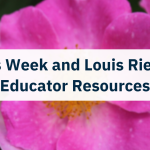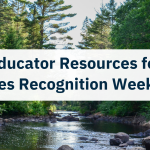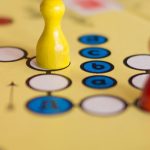Apps to Support Interdisciplinary Learning
How is interdisciplinary teaching and learning strengthened through the use of technology? What is the ability of digital tools and apps to connect different learning environments required for different disciplines?
The Strength of Interdisciplinary Education
Learning that engages rich knowledge-building experiences should not happen through isolated curriculum subjects. Learning experiences are strongest when learners analyze, synthesize, and connect information between two or more disciplines. The Council of Ontario Directors of Education (CODE, 2015) stresses that different disciplines naturally complement one another. They provide learners with rich perspectives that reflect the real world rather than focusing on a single discipline. When considering the demands of the modern workplace, it is unlikely that anyone would learn and practice one discipline at a time or focus on one discipline throughout their whole career. Learners can expect to professionally develop and practice in their field while utilizing multiple disciplines.
An interdisciplinary approach to education enhances learners’ authentic learning environment. Further, it encourages learners to activate knowledge construction skills such as analyzing, synthesizing, critical thinking, and evaluating. We can describe interdisciplinary learning as combining content, important ideas, and methods between two or more subjects to be delivered and learned together. Therefore, educators should assess learners on both subjects at the same time.
Digital Tools & Apps in Interdisciplinary Learning
Technology and digital tools that connect the different learning environments required for different disciplines strengthen interdisciplinary teaching and learning. For example, having the ability to flip between screens. One app might support learners’ content knowledge development (e.g., a science ebook). Another might help learners pre-write and gather ideas for a report. This flexibility demonstrates how digital technologies like tablets can enhance an interdisciplinary approach to education. Digital technologies can strengthen a fluid connection between subjects, enhance knowledge construction, and strengthen digitally networked collaborative projects.
Connecting Content Through Apps
The following is an app list to strengthen the connection between content-specific subject areas (i.e., science and social studies) and language arts.
War of 1812
This app is a digital graphic novel about the War of 1812 from the perspective of a fictional family. The connections between social studies and language arts are very apparent when considering reading fluency and comprehension. Educators could use this digital graphic novel to facilitate the study of the War of 1812 and assess learners’ reading or provide content learners need to write a reading response.
News-O-Matic
News-O-Matic is a daily newspaper for kids. The articles in the app cover a wide variety of subjects, including science, social studies, sports, politics, and events happening around the world. The articles are written in a kid-friendly way, and the paid version of the app also has a feature for educators to differentiate the text based on Lexile reading levels. As learners read about a topic, they can highlight text for later use as a citation, supporting a connection with language arts. Learners can use the app as a platform to build knowledge and then extend this knowledge through literacy-based extension activities. There is also a feature for learners to collect the general citation from their articles in a bibliography.
Notability
As mentioned above in the general overview of interdisciplinary learning, certain apps make integrating two or more subjects possible by providing fluid and easy connections between other websites or apps. Notability is an interactive note-taking app. Suppose learners are using an ebook to research for science, social studies, art, or other discipline-specific subjects. In that case, Notability provides a digital platform for learners to bring all of their ideas together. Learners can upload screenshots, type notes, connect with digital drawing tools, and highlight points within the app. The best feature of Notability is that learners can split the screen within the app. They can view their research website and manipulate the notability document simultaneously. That will help learners synthesize important keynotes and require less transition time while flipping between researching, note-taking, and writing.
Inspiration Maps
Inspiration Maps is a fantastic mind-mapping app for learners to brainstorm, take notes, or present ideas. This app supports an interdisciplinary unit by providing pre-made templates specific to different content areas. Therefore, these maps could be the beginning pre-writing points for a later written report or oral presentation. For history, the map templates available are Civilization Analysis, Event Analysis, Issue Analysis, and Time Period Analysis. For science, the map templates available are Cell Comparison, Classification, Communicable Diseases, Famous Experiment, Lab Report Diagram, Lab Report Outline, Six Kingdoms of Biology, and Vocabulary List.
These are just a few examples of apps that could support an interdisciplinary approach to education. The main point of mobile technologies and enhancing the connection between different disciplines is that technology makes the process more fluid. An app may have built-in interdisciplinary connections, can complement other apps or tablets generally, or provide an easy transition to flip between different apps and support the integration of multiple curriculum areas.
References
A 21st Century Vision of Public Education for Canada (2012)
21st Century Learning Activity Rubrics (Innovative Teaching and Learning, 2012)








